Fida Hasan’s Research Focuses on cross-disciplinary and interdisciplinary solutions across enterprise cybersecurity, smart city security, and digital twin. He integrates emerging technologies to enhance traditional cybersecurity practices and leverages data science for data-driven decision-making in healthcare diagnosis and prognosis.
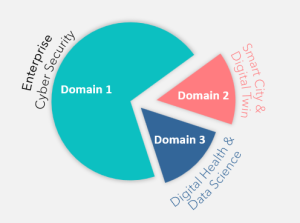
Recent Research Experiences
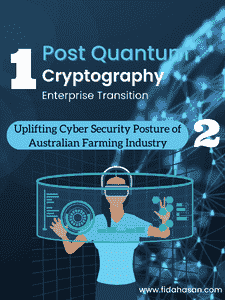 Post Quantum Cryptography Era in Australia
Post Quantum Cryptography Era in Australia
CSCRCs are Commonwealth-funded collaborations between industry, government, and academia to develop cyber security capability and capacity to help keep Australia safe. Several projects are being run at QUT as part of this extended body. SOCRATES and SCATES are two of them that are currently active. SOCRATES aims to develop post-quantum cryptographic solutions for Enterprise Systems in Australia, whereas SCATES aims to improve Australia's cyber security posture in the farming industry.
One category of cryptographic algorithms, known as public key cryptography or asymmetric cryptography are based on hard computational problems in mathematics, such as factoring very large numbers. These problems can be solved efficiently using emerging quantum computers. Hence, current public-key cryptosystems that rely on these complex mathematical problems are not quantum-safe.
These algorithms are currently used widely for digital signatures, entity authentication and in key exchange algorithms, underpinning many business operations, including e-commerce transactions. In 2018, Mosca [25] noted that assessment of organisational resilience against quantum attacks required understanding of three aspects: (1) the security shelf life of information assets, (2) the migration time to quantum resistant systems, and (3) the time remaining before quantum computers break the algorithms currently in use.
Determining the first aspect is within the capacity of an organisation or enterprise. The second and third aspects present greater challenges and require expertise beyond most organisations. Performing such a transition at scale while maintaining business continuity is therefore a major challenge. The time remaining for use of current algorithms is not known but considered likely within a decade or two. This motivates exploration of what transition to quantum resistant systems involves for organisations, and the challenges associated with that transition.
 CyberSecurity Resilience of the Australian university
CyberSecurity Resilience of the Australian university
RMIT CCSRI working with in collaboration with the Australian Government Department of Education, Skills and Employment (the Department) along with the University Foreign Interference Taskforce and its members to deliver a solution to enhance cyber security across Australia’s university sector. The project is building on the previous work of the University Foreign Interference Taskforce (UFIT) in developing the Guidelines to Counter Foreign Interference in the Australian University Sector (the Guidelines).
Based on the objective, the specific aims are;
The deliverables of the project are:
- 1. Establishment of a Trusted and nationally recognised Cyber Security Forum:
-- includes the design, development and delivery of a sector-led, nationally recognised, and trusted forum to advance cyber-resilience, particularly in the context of foreign interference, across the university sector.
- 2. Developing standardised threat and countermeasure sharing mechanisms that are sector-specific to enhance their capabilities and resilience to contemporary threats, threat actors and responses to combat risks by:
-- Developing a standardised two-way mechanism amongst universities and Government to share threat intelligence, countermeasure best practice and threat models
-- Developing a standardised threat model for universities to assist in guiding investment and cyber security uplift; and
--• Developing a comprehensive suite of sharable best practice guidelines or “blueprints” that draw from existing Government risk information (e.g. Essential 8, Australian Information Security Manual, Practical Guidelines) that can be applied proportionate to each universities level of risk.
PROJECT TITLE: Vehicle to Vulnerable Road User Solution for Brisbane
DESCRIPTION OF THE PROJECT
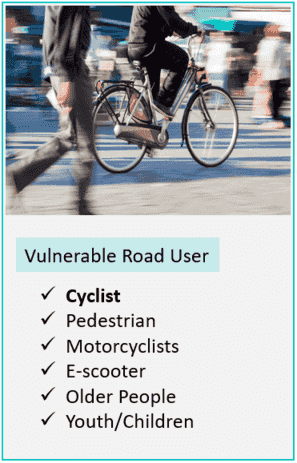 Status: Active (Industry part Completed)
Status: Active (Industry part Completed)
Partner: Transport and Main Road (TMR), QLD and iMOVE CRC (2019-2020).
This research based development work focuses on ’Vehicle to Vulnerable Road Users (V2VRU) interactions’ for achieving Road Safety using existing technologies and also evolving Internet of Things (IoT) technologies. As the role of the Project Manager (PM), my responsibility involves maintaining all party collaboration and also conducting research and plan, design and development.
This Proof-of-Concept (PoC) project aims to develop a VRU road safety solution using emerging communication and technolgoical system to reduce collisions and enhance driver awareness of potential conflicts with people riding bicycles/escooter etc. The specific objectives for the project are as follows:
- Determine V2VRU system requirements
- Develop a PoC system
- Perform testing and demonstrations
This project is bound to NDA.
PROJECT TITLE: PostScript: A web application to save and share memories. Project Supervisors:
DESCRIPTION OF THE PROJECT
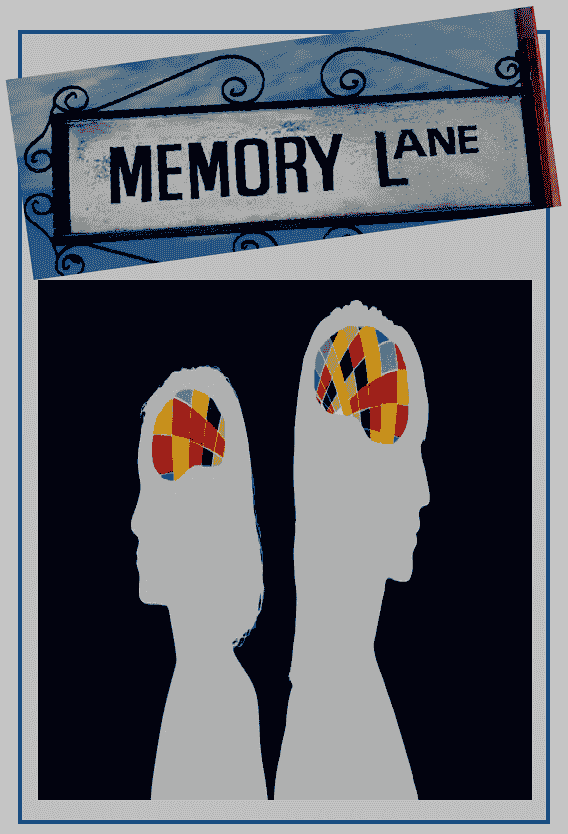 Status: Inactive (Completed)
Status: Inactive (Completed)
An UI/UX based Industry project focuses on creating a platform that stores memories of user so that it can be viewed later by future generations. A team with Nine active memebers from QUT and Aureolin Group tried to find an innovative way to preserve the memories of people and share them with the recipient after the demise of one who created the memories. The design and development challenges was to align rythimatically a set of features and set of instruction.
In this innovation, the user would create an account to instruct a number of services and at some point, they will be conveyed to the recipient. There is a social impact of it that we believed will create love and affections towards the person who sends the memories. Also, it helps in creating memorable moments and the recipient feel special. The final artifacts of this project will collect, preserve, and share memories according to user preference. The project outcome is fruitful, and at any point, the platform may launch. Note that, the whole work is under NDA, thus I am unable to share the technical details.
PROJECT TITLE: Service-Oriented Architecture and Management System
DESCRIPTION OF THE PROJECT
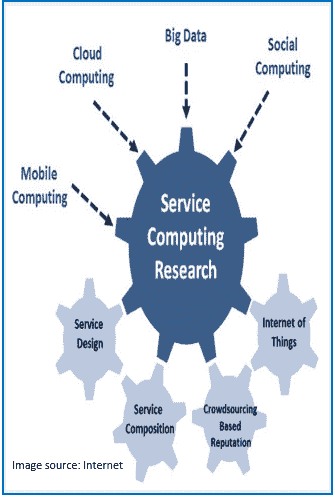 Status: Active Proposal
Status: Active Proposal
The primary objective of this research is twofold. Firstly, identifying the feasibility and effectiveness of CIoT platform-based UAV (i.e., drone) services and their use cases. This also includes service designing and modeling from similar research and models, software engineering, and distributed systems in consideration of service functionalities, behavior, and quality. Secondly, the recommendation and service composition of drone services for commercial applications as DaaS...
Based on the objective, the specific aims are;
- 1. To design a novel Drone as a Service (DaaS) framework following standard SOA and web services principle in the CIoT domain.
- 2. To conduct service selection in quality-based standard ways and mesh-up different operations across multiple services to form a composed service.
- 3. To establish trust, reputation, and security across the boundaries of DaaS technologies.
PROJECT TITLE: Evolution towards Cognitive Internet of Vehicles (CIoV): Technology and Security Issues
DESCRIPTION OF THE PROJECT
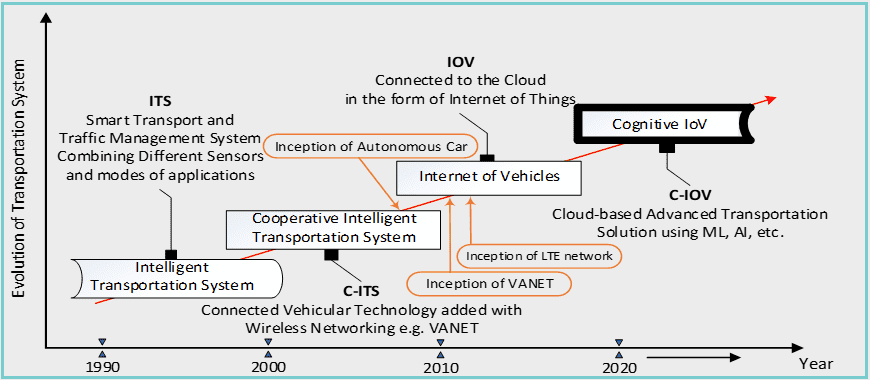
Over the past few years, we have experienced great technological advancements in the information and communication field, which has significantly contributed to reshaping the Intelligent Transportation System (ITS) concept. Evolving from the platform of a collection of sensors aiming to collect data, the data exchanged paradigm among vehicles is shifted from the local network to the cloud. With the introduction of cloud and edge computing along with ubiquitous 5G mobile network, it is expected to see the role of Artificial Intelligence (AI) in data processing and smart decision imminent. CIoV, which is abbreviated from Cognitive Internet of Vehicle, is one of the recently proposed architectures of the technological evolution in transportation, and it has amassed great attention. It introduces cloud-based artificial intelligence and machine learning into the transportation system. This research focuses to identify the future expectations of CIoV and it's security issues. Based on this idea, a conference paper is published so far, this can be found here.
PROJECT TITLE: Novel Application of <b>Blockchain</b>
DESCRIPTION OF THE PROJECT
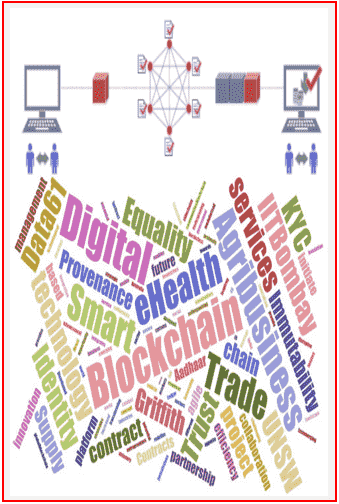 Status: Active
Status: Active
The primary objective of this research is twofold. Firstly, identifying the feasibility and effectiveness of CIoT platform-based UAV (i.e., drone) services and their use cases. This also includes service designing and modeling from similar research and models, software engineering, and distributed systems in consideration of service functionalities, behavior, and quality. Secondly, the recommendation and service composition of drone services for commercial applications as DaaS...
PROJECT TITLE: Vehicle to Vulnerable Road User Solution Using BLE 5
DESCRIPTION OF THE PROJECT
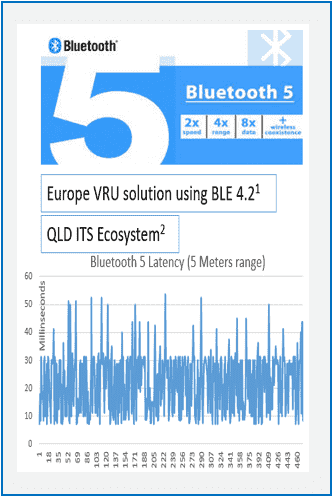 This project has engaged with companies from the cycling,
automotive and smart city industries to create
communications solutions for drivers and
vulnerable road users (VRUs).
This project has engaged with companies from the cycling,
automotive and smart city industries to create
communications solutions for drivers and
vulnerable road users (VRUs).
Roksana Rahman
Student
Abdullah Al Mamun
Researcher
Journal Publications
- Islam, M. S., Hasan, K. F, Ghani, N. A., Moni M. A. (2022) “HARDC: A novel ECG based heartbeat classification method to detect arrhythmia using hierarchical attention-based duel structured RNN and Dilated CNN” Submitted/Under Review on Neural Networks, Elsevier
- Islam, Hasan, K. F, S., Ghani, N. A., Moni M. A. (2022) “HACBD: A novel adaptable hybrid deep learning method to recognize multi-label text emotion using hierarchical attention-based capsule in dual structured RNN and Deep CNN” Submitted/2nd Round of Revision on Applied Intelligence, Springer
- Hasan, K. F., Feng, Y, and Tian, Y.-C. (2022) “GNSS-driven Accurate Time Synchronization for VANET,” Under Review, 2nd Round of Revision in IEEE Transaction on Network and Service Management.
- Apon, T., S., Alam, MGA, Baidya, S., Tahmid, M., F., Zaman, M., S., Alam, M., A., and Hasan, K. F, Moni M. A. (2022) “LeukoNet: An Interpretable CNN-based Deep Learning Model for Leukocyte Classification” Under Internal Review
- Mim, T., R., Amatullah, M., Afreen, S., Yousuf, M., A., Hasan, K. F, Moni M. A. (2022) “GRU-INC: An Inception-Attention based Approach using GRU for Human Activity Recognition” Under Internal Review
- Talukder, M. A, Islam, M. M., Uddin, M. A., Akhter, A., Hasan, K. F, Moni M. A. (2022) “Machine Learning-based Lung and Colon Cancer Detection using Deep Feature Extraction and Ensemble Learning” Accepted on Expert System with Applications, Elsevier
- Bala M, Ali MH, Satu MS, Hasan KF, Moni MA. (2022) “Efficient Machine Learning Models for Early Stage Detection of Autism Spectrum Disorder”, Algorithms. 15(5):166; 2022.
- Hasan, K. F., Feng, Y, and Tian, Y.-C. (2021)”GNSS-driven Accurate Time Synchronization for VANET,” Under Review, Under Review in IEEE Transaction on Intelligent Transportation System.
- Dasanayaka, N., Hasan, K. F., Wang, C., and Feng, Y. (2021) “Enhancing Vulnerable Road User Safety: A Survey of Existing Practices and Consideration for Using Mobile Devices for V2X Connections,” Under Review in IEEE Access, arXiv preprint arXiv:2010.15502.
- Hasan, K. F., Feng, Y, and Tian, Y.-C. (2018)”GNSS Time Synchronization in Vehicular Ad-hoc Networks: Benefits and Feasibility,” in IEEE Transaction on Intelligent Transportation Systems, March 2018.
- Hasan, K. F., C. Wang, Feng, Y, and Tian, Y.-C. (2018)”Time Synchronization in Vehicular Ad-hoc Networks: A Survey in Theory and Practice,” in Vehicular Communication, Elsevier Publication, October 2018.
- Hasan, K. F., M. Morshedul Islam (2011). “Evolution of the 4th Generation Mobile Communication Network: LTE-Advanced”. International Journal of Computer Technology and Applications (IJCTA) (Peer-reviewed), India, Vol: 2(4), 1092-1098, 2011 (ISSN:2229-6093).
- Hasan, K. F., Ali, S. M., Meherun-Nessa, Aditya, S.K., and Mazumder, R.K. (2011). “Retrieval of Surface Reflectance from NOAA-AVHRR Satellite Data.” Dhaka University Journal of Engineering and Technology (Peer-reviewed), Bangladesh, Vol: 1(2) 121-124, 2011 (January) (ISSN:2218-7413).
- Hasan, K. F., Ali, S. M., Rahman, M., S.(2011). “A Digital Approach of Satellite Image Processing for Retrieving Surface Parameters.” International Journal of Engineering Research and Application (IJERA) (Peer-reviewed), India, Vol: 1(3), 2011 (ISSN:2248-9622).
- Hasan, K. F., Morshed, M., M., and Ali, S. M.(2010) “A Satellite-Based Method to Determine Land Surface Temperature from NOAA-AVHRR Digital Data.” Journal of the Bangladesh Electronic Society (Peer-reviewed), Bangladesh, Vol: 10(1-2), 87-92, 2010 (ISSN:1816-1510).
Conference Publications
- Asif, Md. Rashid Al, Hasan, K. F., Islam, M. Zahidul, Khondoker, Rahmatullah, “STRIDE-based Cyber Security Threat Modeling for IoT-enabled Precision Agriculture.” 3rd International Conference on Sustainable Technologies for Industry 4.0, Dhaka, Bangladesh, 18-19 December
- Hasan, K. F., Kaur, T., and Feng, Y., “Cognitive Internet of Things (CIoV): Vision, Architecture and Challenges,” 17th ITS Asia Pacific Forum 2021, Brisbane, Australia, 13-18 April
- Hasan, K. F., Kaur, T., Hasan M. M., and Feng, Y. “Cognitive Internet of Vehicles: Motivation, Layered Architecture and Security Issues,” International Conference on Sustainable Technologies for Industry 4.0, Dhaka, Bangladesh, 24-25 December 2019.
- Hasan, K. F., Wang, C., Feng, Y., and Tian YC, (2018) “Exploring the Potential and Feasibility of Time Synchronization using GNSS Receivers in Vehicle-to-Vehicle Communications,” ITM 2018, Reston, Virginia, USA, Jan 29-2 Feb 2018.
- Hasan, K. F.and Feng, Y., and Tian, YC, (2018), “Feasibility Studies of Time Synchronization Using GNSS Receivers in Vehicle-to-Vehicle Communications,” International Global Navigation Satellite System (IGNSS)-2018, Sydney, Australia, 7-9 Feb 2018.
- Hasan, K. F., Feng, Y. (2016). “A Study on Consumer-Grade GNSS Receiver for Time Synchronization in VANET.” 23rd Conference of ITS world congress, 10-14 October, Melbourne, Australia, 2016.
Book Chapters
- Hasan, K. F., Overall, A., Ansari, K., Ramachandran, G., & Jurdak, R. (2021). Security, Privacy, and Trust: Cognitive Internet of Vehicles. Next-Generation Enterprise Security and Governance, CRC Press, USA (Accepted) arXiv preprint arXiv:2104.12878.
- Humayun K. Hasan, K. F., Ansari, K. (2021). Explainable Artificial Intelligence for Security and Trust in Context of Smart City Application, Springer Nature (Under Review)